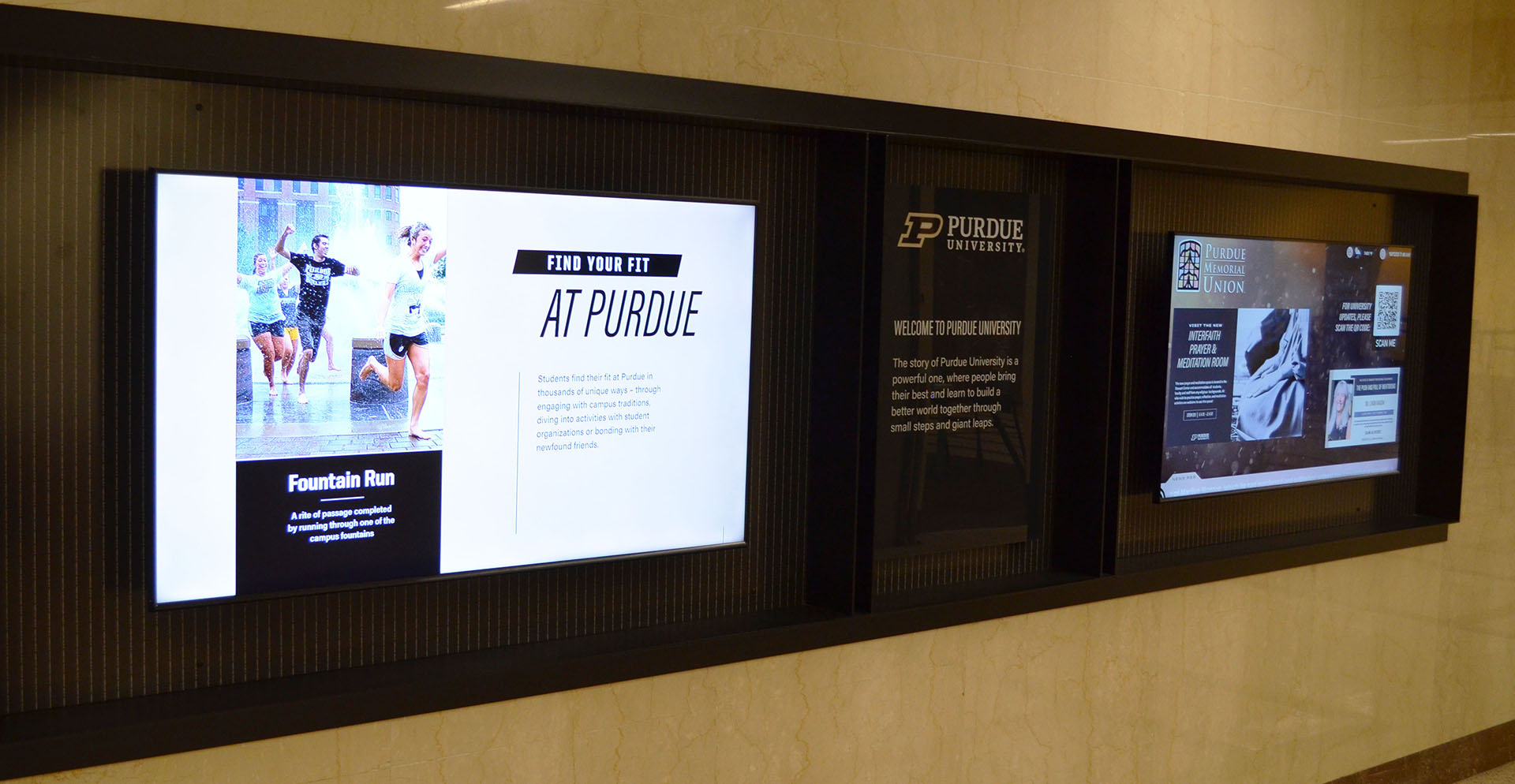



At the name implies, the "digital signage" classification is a very broad term for any form of digitally-controlled signs/signage. This ever-expanding classification provides a means of displaying information via a digital display to users. It can include purpose built displays/basic illuminated boards, but most commonly includes the use of high-resolution monitors of various sizes and shapes to fit the user's application. This classification can include a passive display that the user can simply view but not control/influence, or an interactive display that the user can interact with/manipulate through the use of touch, button press, or other external sensors.
This technology is most commonly found in:
Though there are many ways to achieve the end result of a digital signage installation, most applications contain three components to make things work:
With having such a wide variety of applications and organizations available across the Purdue campuses, each with their own unique budgetary needs, staff capabilities, and deployment scale, having a one-size-fits-all solution is not practical.
Some groups will prefer the low-cost, simplified, approach by using a simple USB drive connected to each display that they copy files to in order to manage their content. Others fall somewhere in the middle with skills and capabilities to manage their own deployments and hardware themselves. The ease of content updates and deployment across multiple installations simultaneously makes many groups/installations across campus well suited to utilize a hosted content provider for their deployment/content management. For these applications, Purdue has partnered with the Four Winds Interactive digital signage platform. (More information about the Four Winds Interactive platform can be found via this Knowledge Base article.)
Within the Audio Visual Services department, we are content "Source" agnostic - we allow each group to determine what will best fit their budget, staff capabilities, and deployment scale as that is something only you would know/be able to judge. We encourage you to provide the "Source" hardware/platform you prefer to work with (whether a simple USB drive, mini-PC, dedicated content player, etc.), and we will simply connect it to the display device(s) that we are recommending/installing in your space.
AV Services does not provide any content creation/management services, or the "Source" device(s) themselves. This allows us to focus on the areas that we are most knowledgable/experienced in and able to provide the greatest resource for our customers, rather than steering a group or individual towards a particular solution only to find it does not fit their needs, budget, or application and them being dissatisfied with our recommendation and their investment.
If you have any questions, or if you are ready to discuss your installation in greater detail, please reach out via the Contact Us page. We would be happy to discuss your application/installation with you and provide any recommendations we may have for displays and hardware.